Abstract
Three forms of viral hepatitis can be recognized: hepatitis A, hepatitis B, and hepatitis non-A, non-B. Hepatitis A is caused by a picornavirus, is transmitted by the faceal—oral route, does not become chronic, and no chronic virus carriers exist. The virus can be grown in cell cultures, and killed as well as live attenuated virus vaccines are under development. Hepatitis B is caused by an enveloped virus containing a circular, double-stranded form of DNA. The disease is transmitted parenterally through inoculation of blood or blood products containing virus or through close personal contact with a virus-positive person. Hepatitis B becomes chronic in a certain number of cases and can lead to cirrhosis and primary liver cell carcinoma. The blood and certain body secretions of individuals with a persistent or chronic infection may remain infectious for many years. The hepatitis B virus cannot be grown in cell cultures but the entire genome has been sequenced and cloned in bacterial and eukaryotic cells. An inactivated virus vaccine has been prepared from hepatitis B surface antigen present in the plasma of hepatitis B virus carriers and further vaccines are under development. The agents of hepatitis non-A, non-B have not been identified. It is possible to distinguish between a predominantly parenterally transmitted and an orally transmitted form of hepatitis non-A, non-B. The latter is reported to be caused by a picornavirus that does not, however, have any antigenic relationship with hepatitis A virus.
Full text
PDF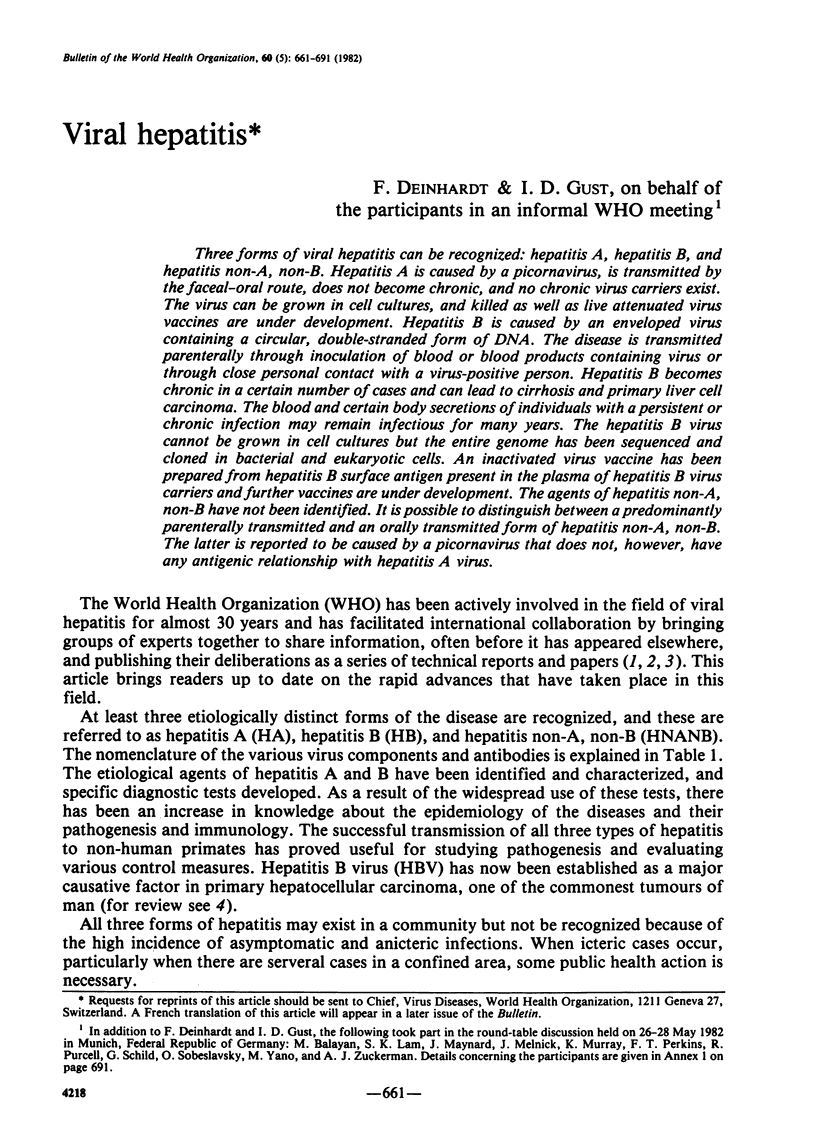
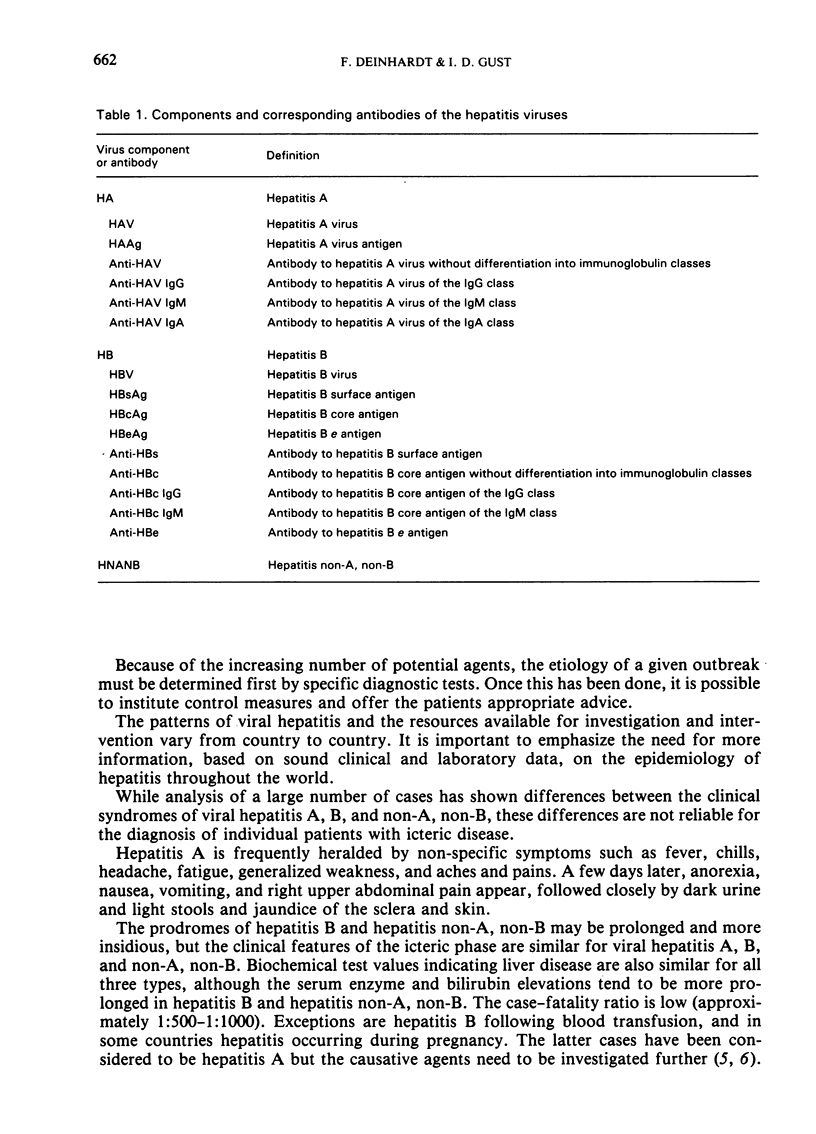
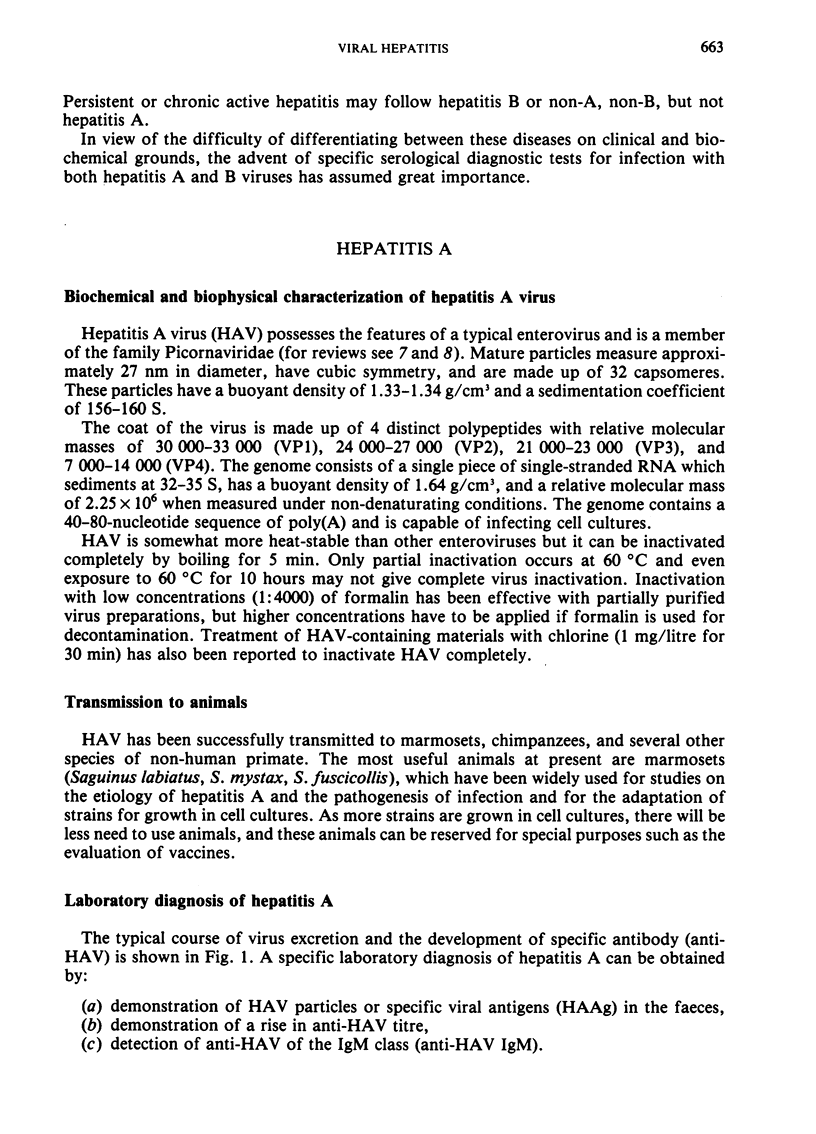
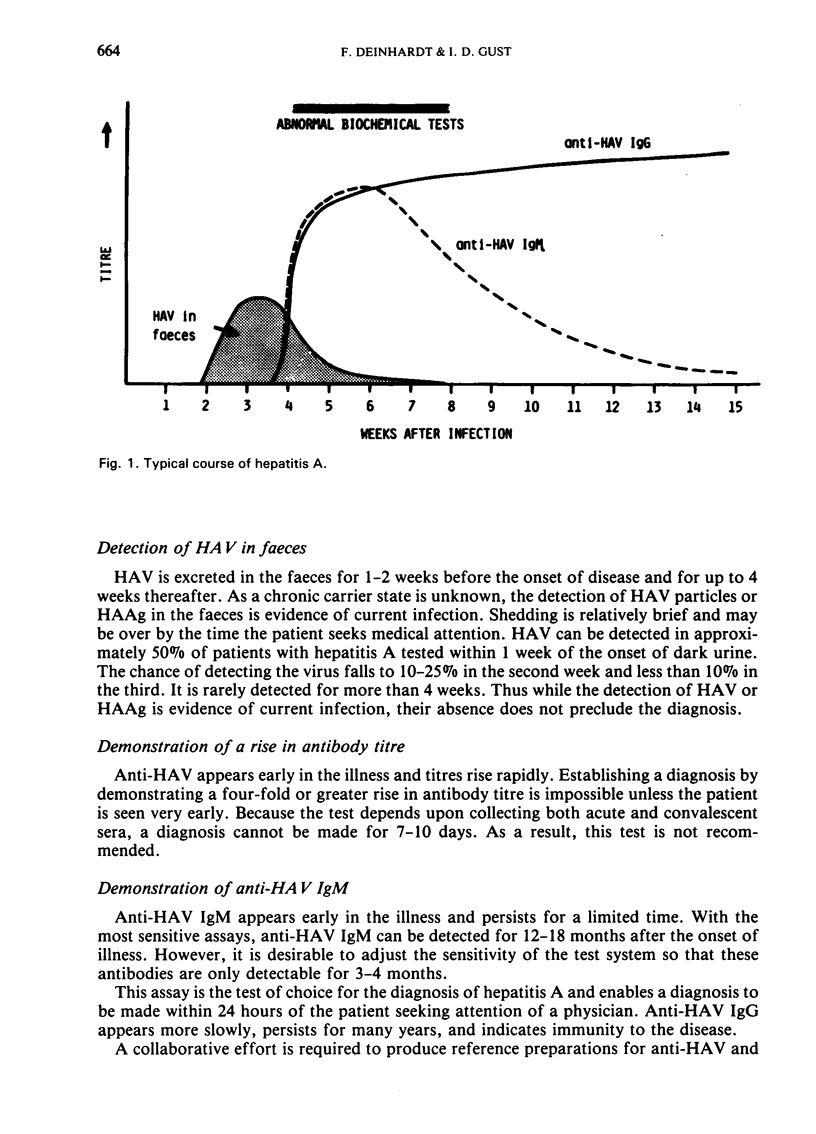
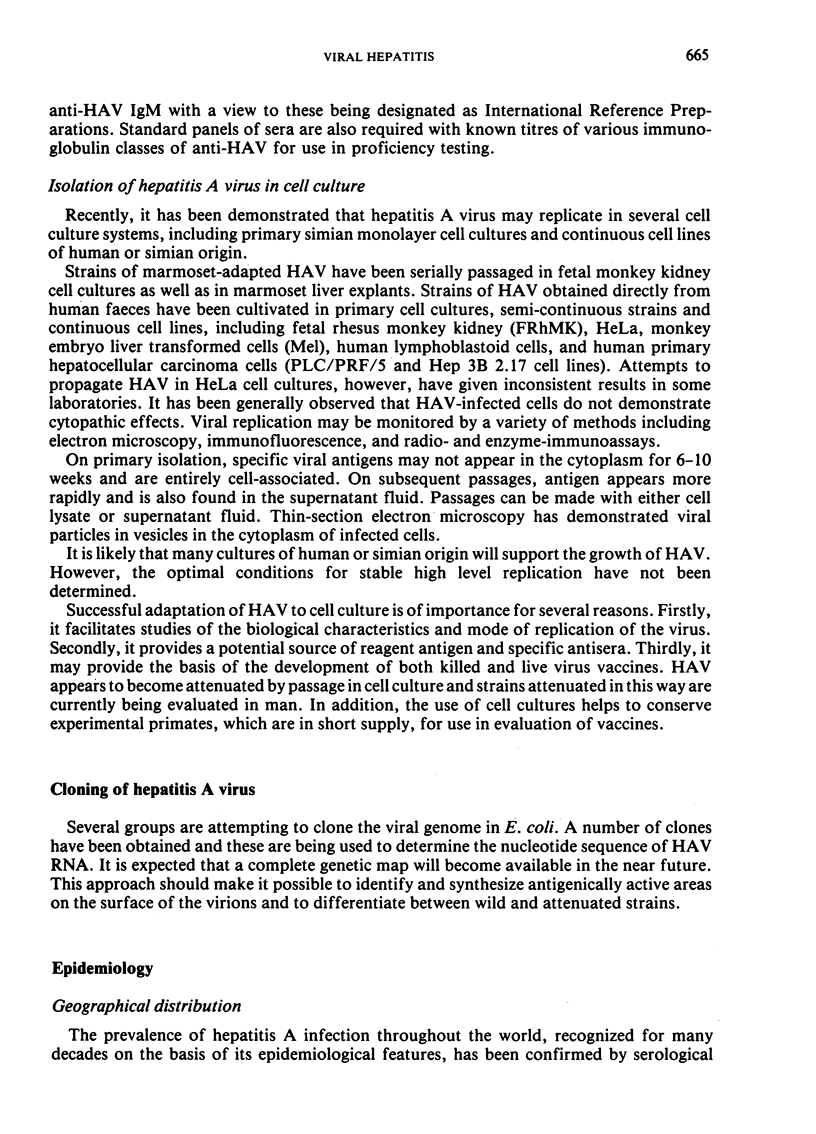
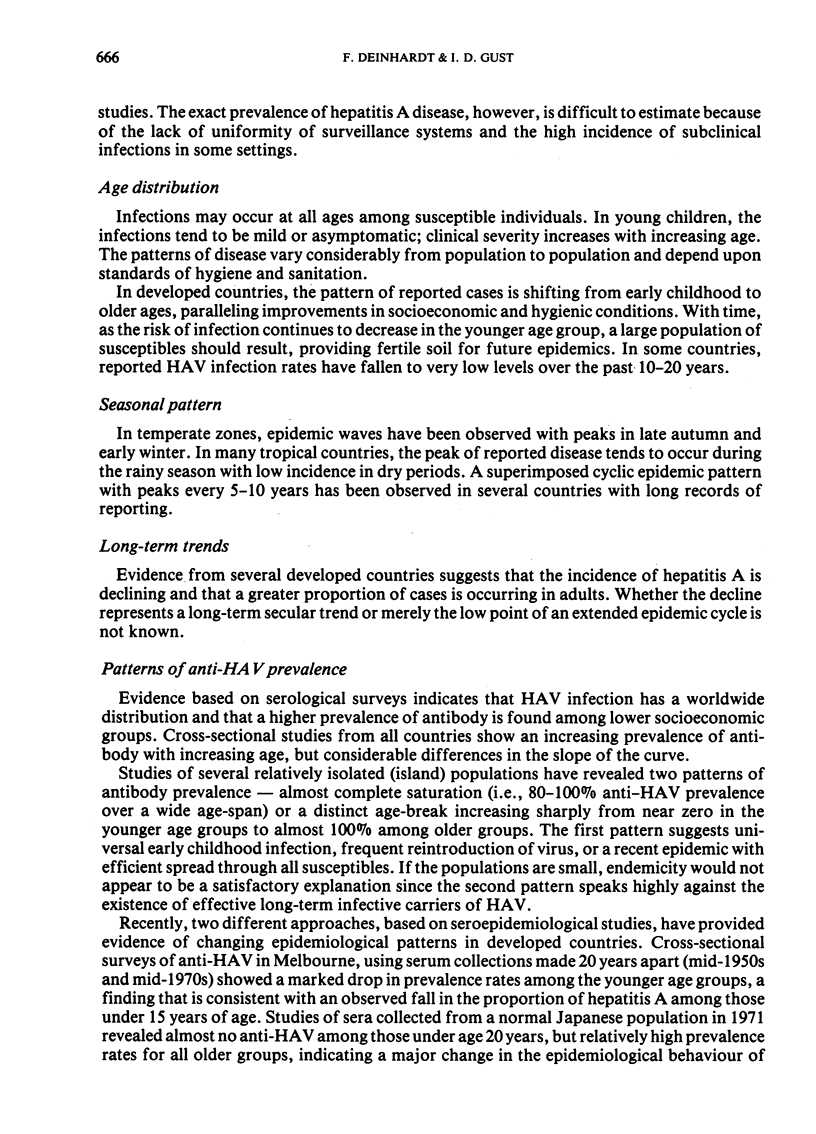
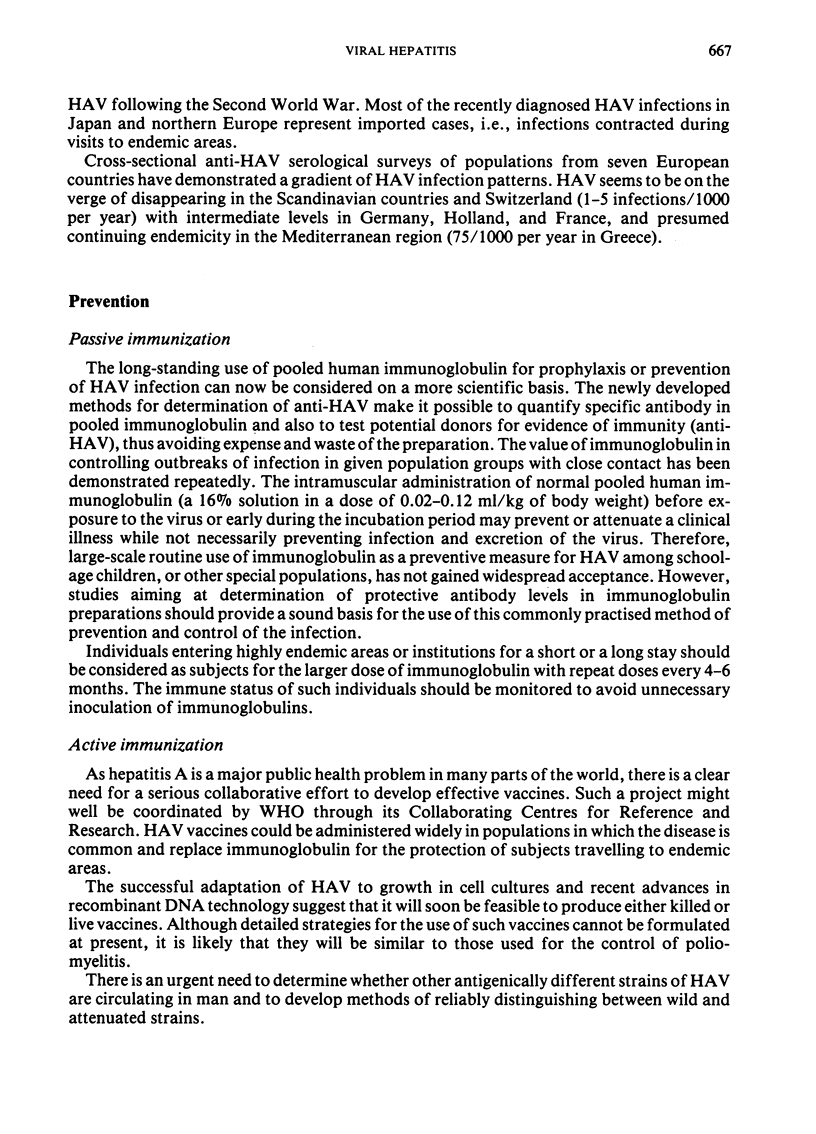
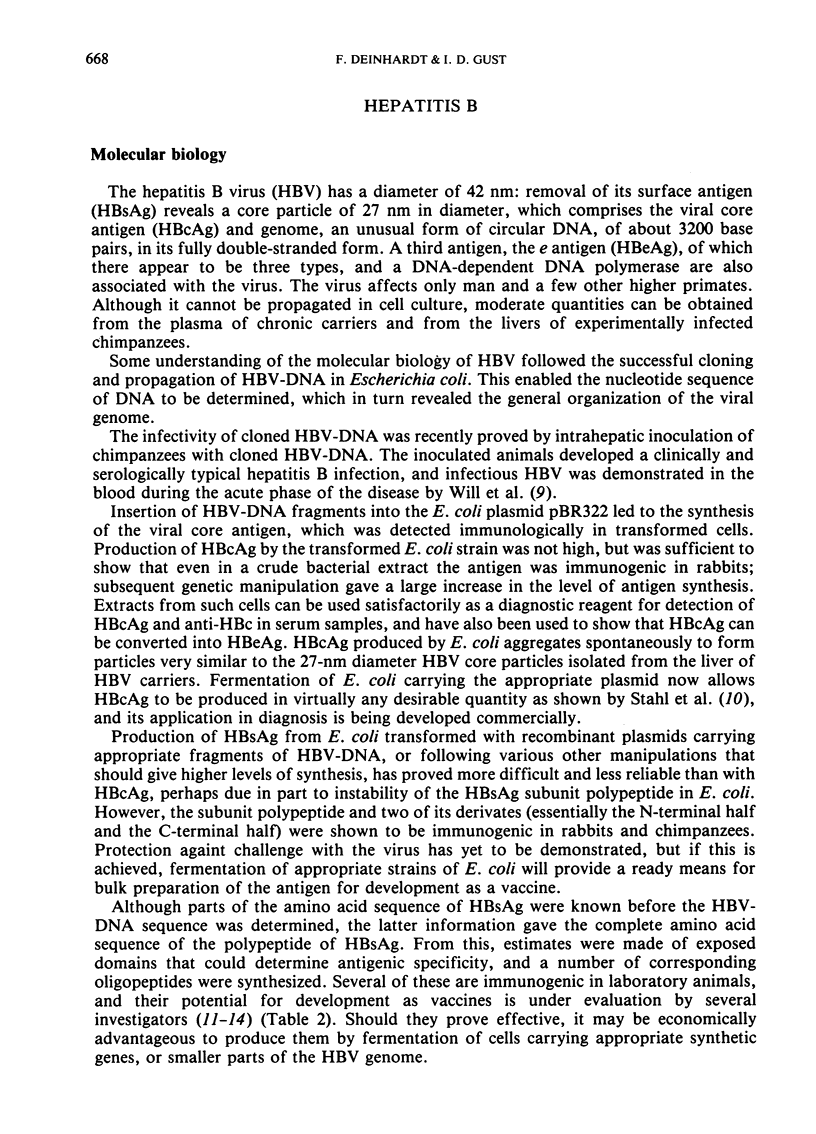
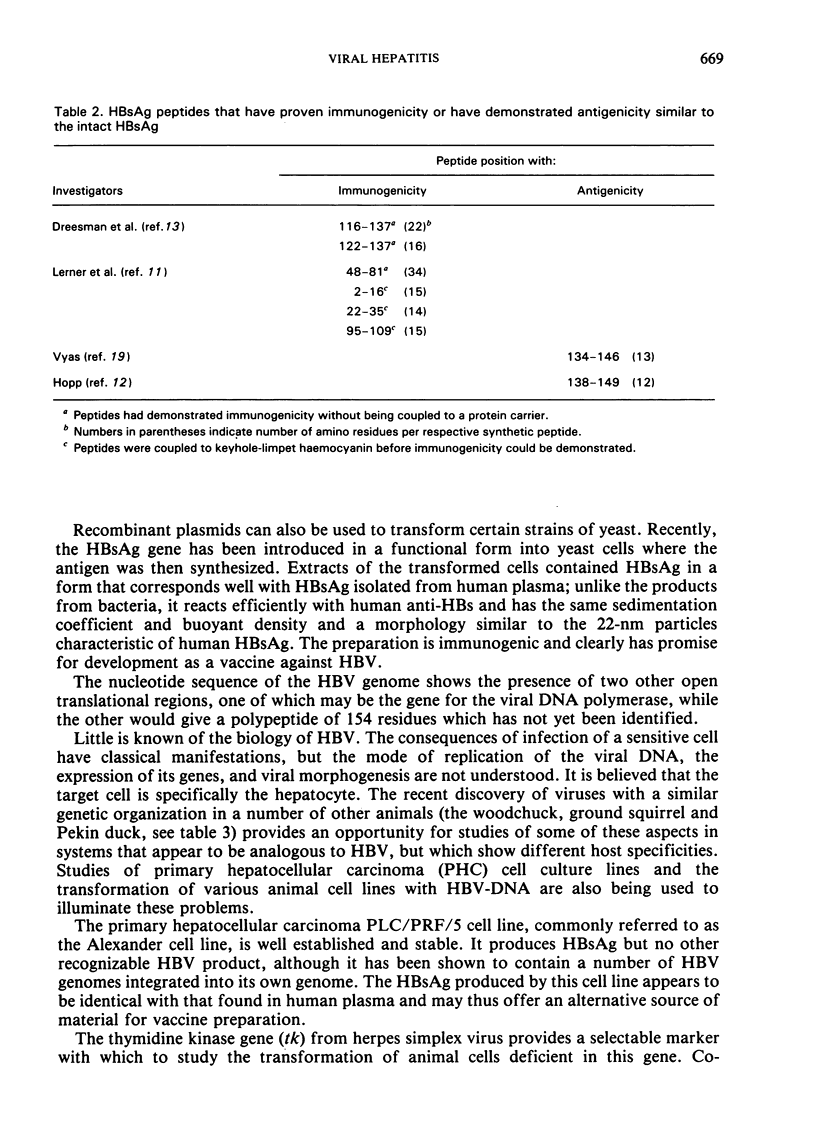
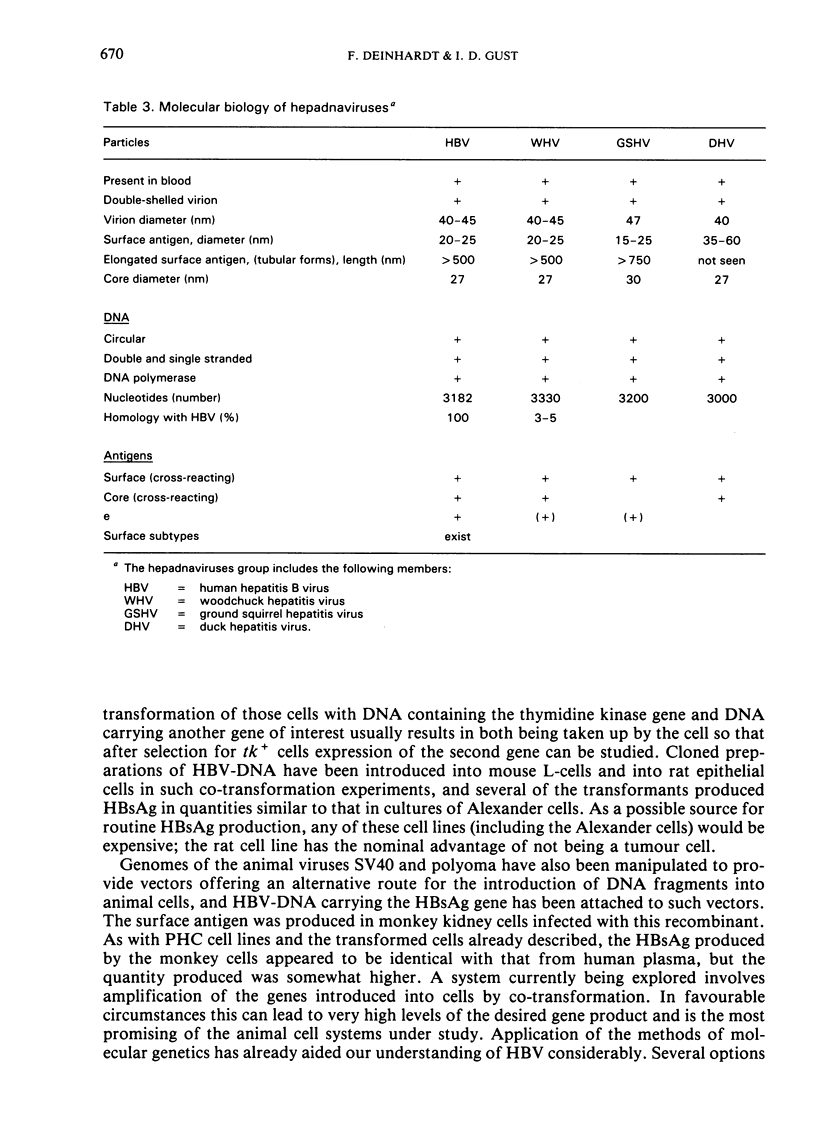
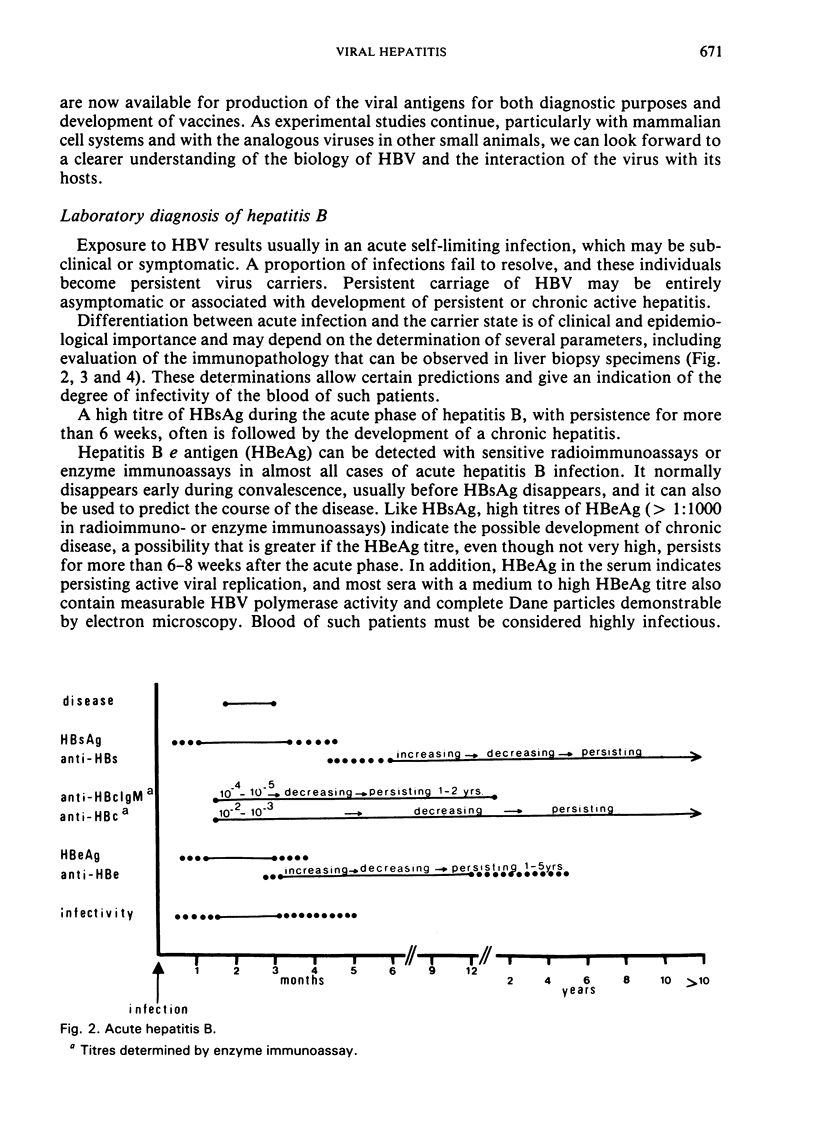
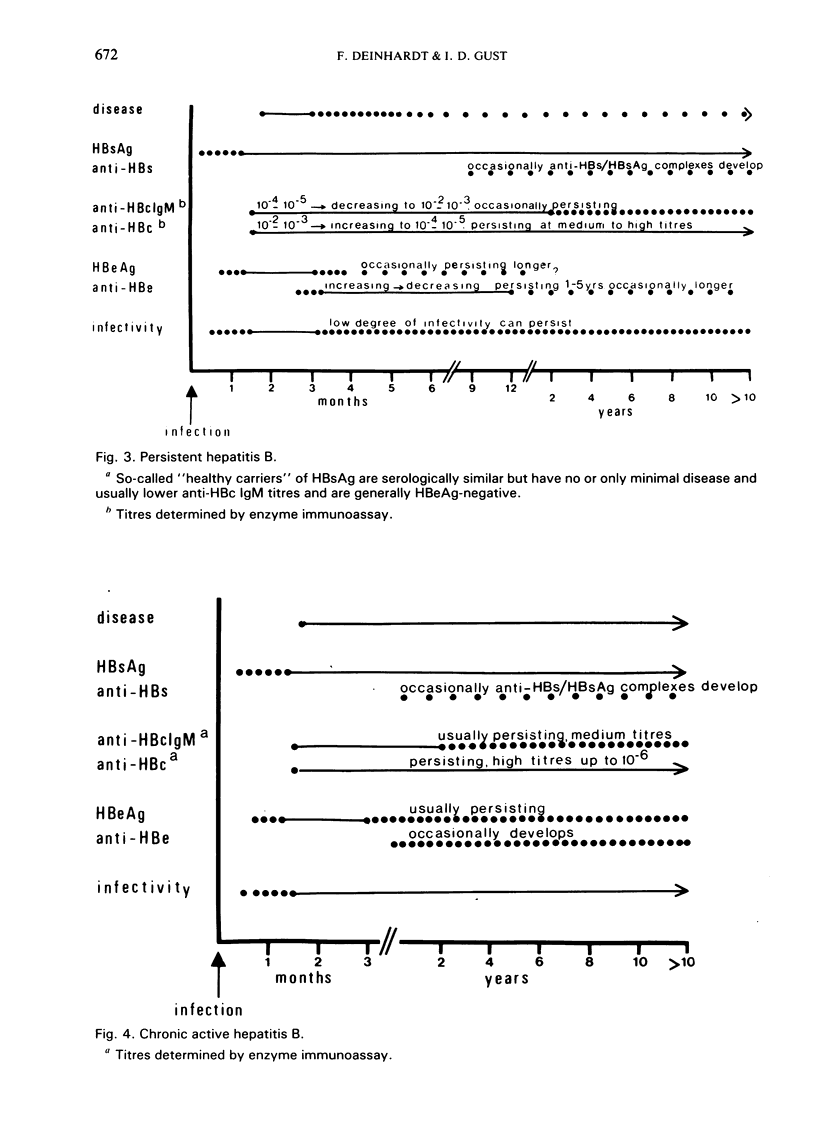
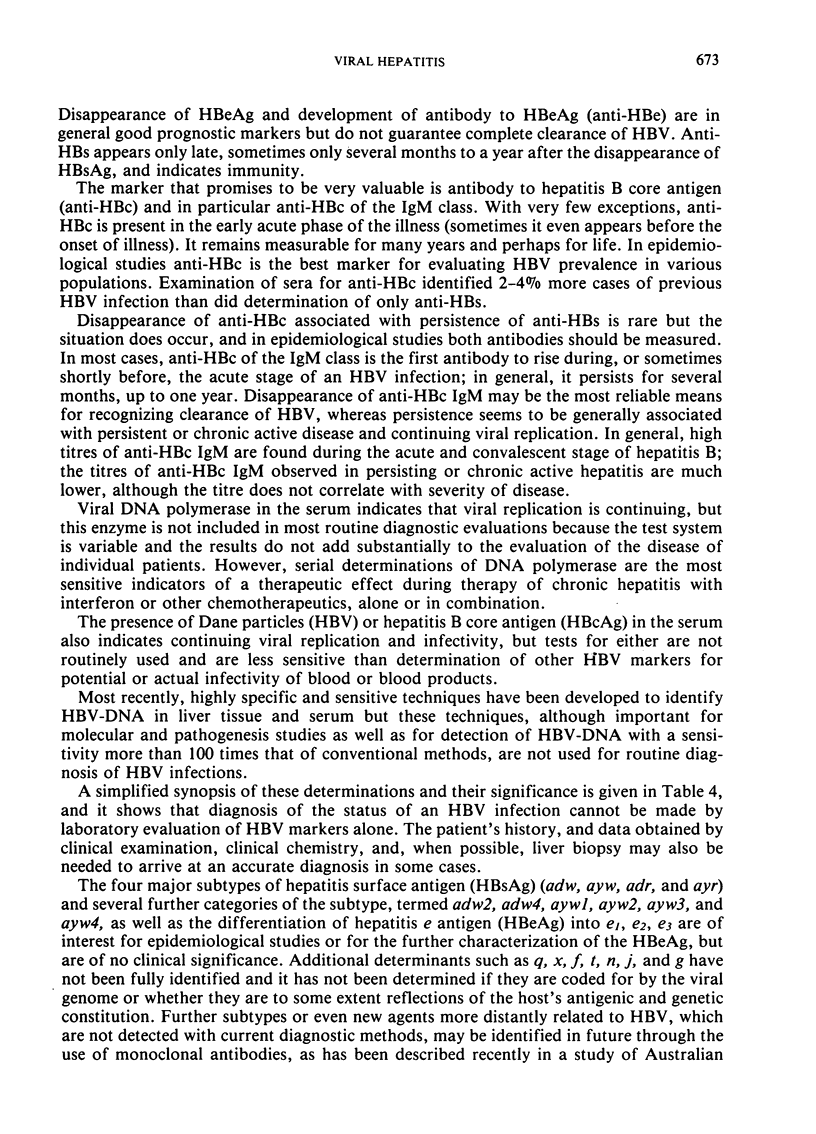
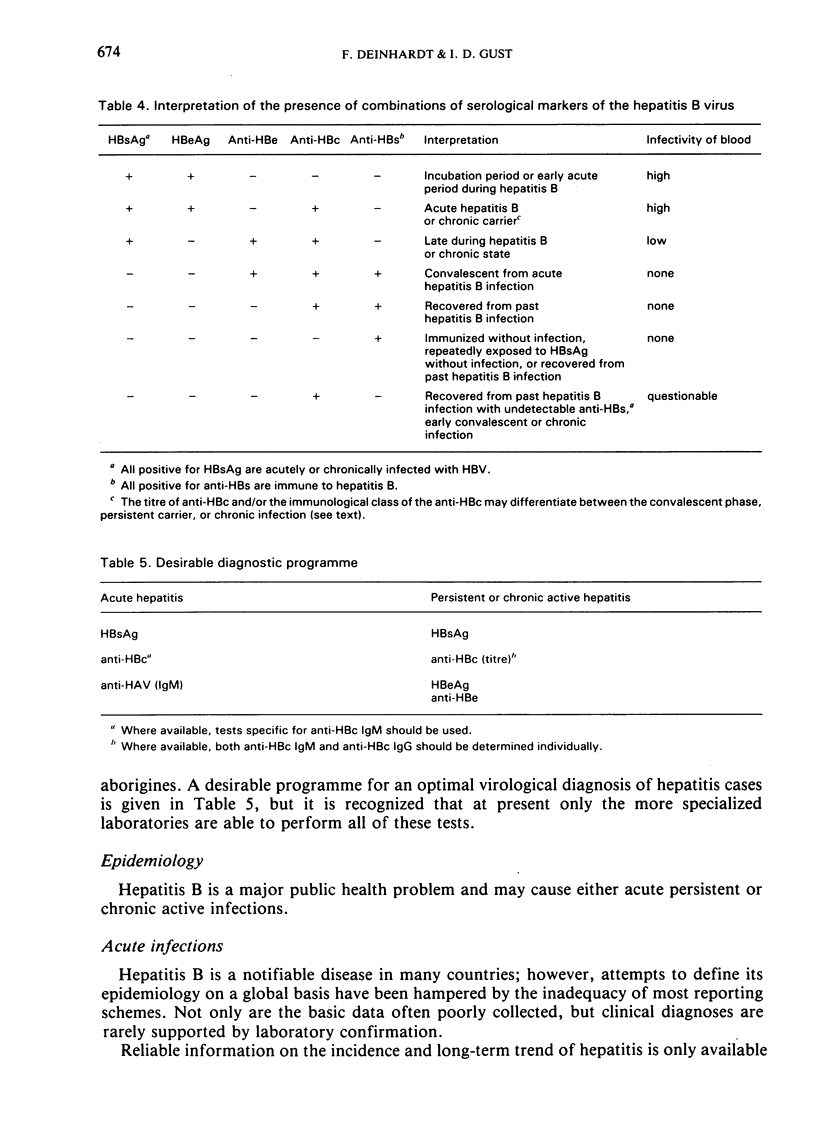
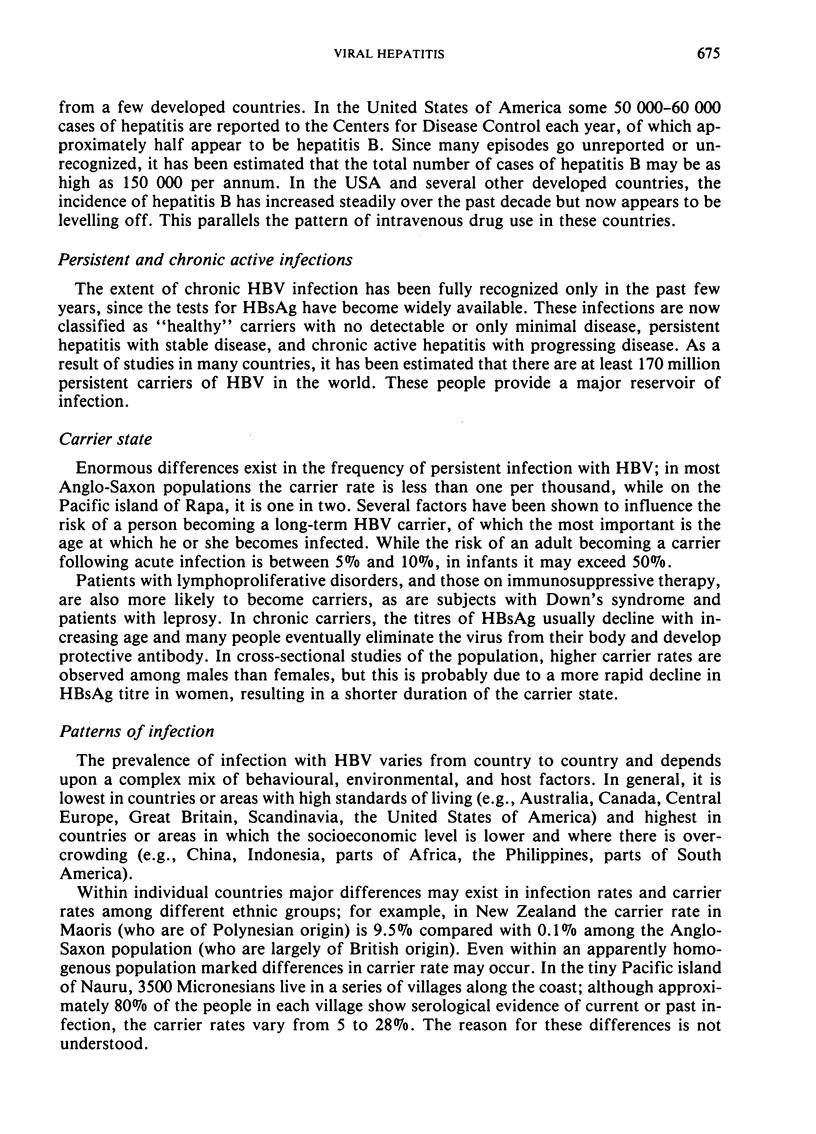
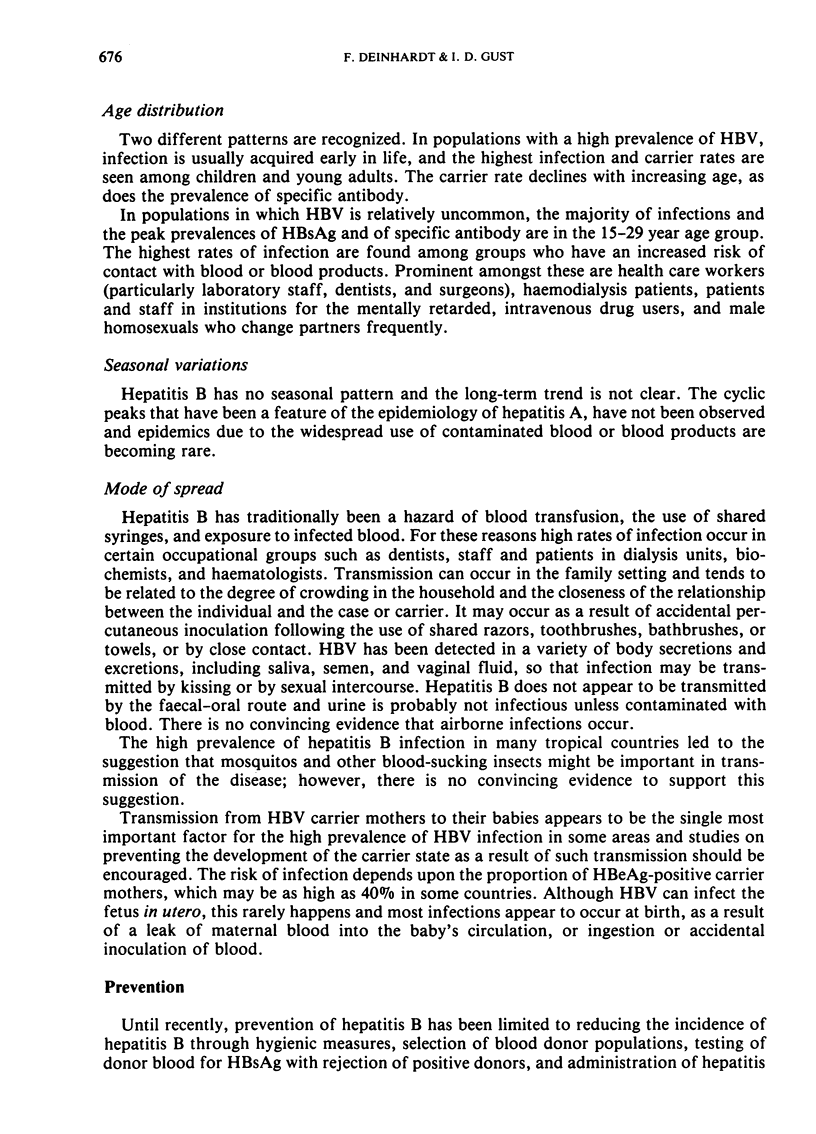
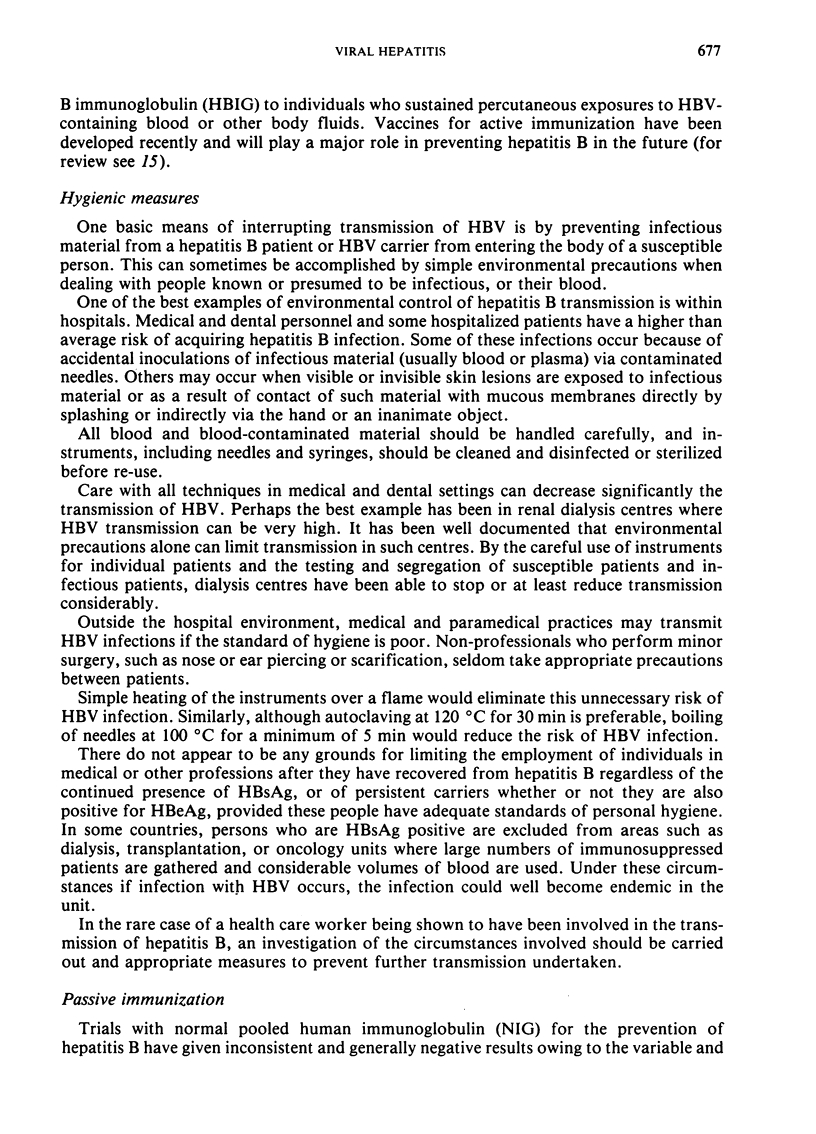
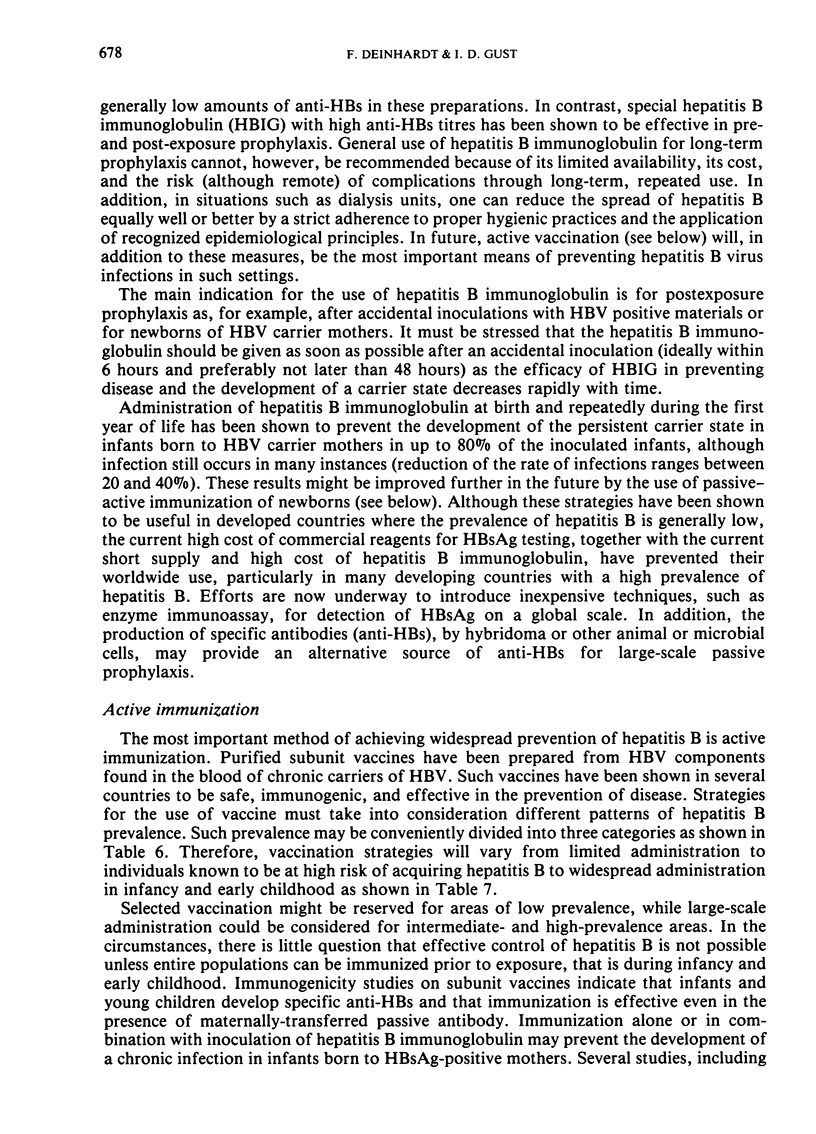
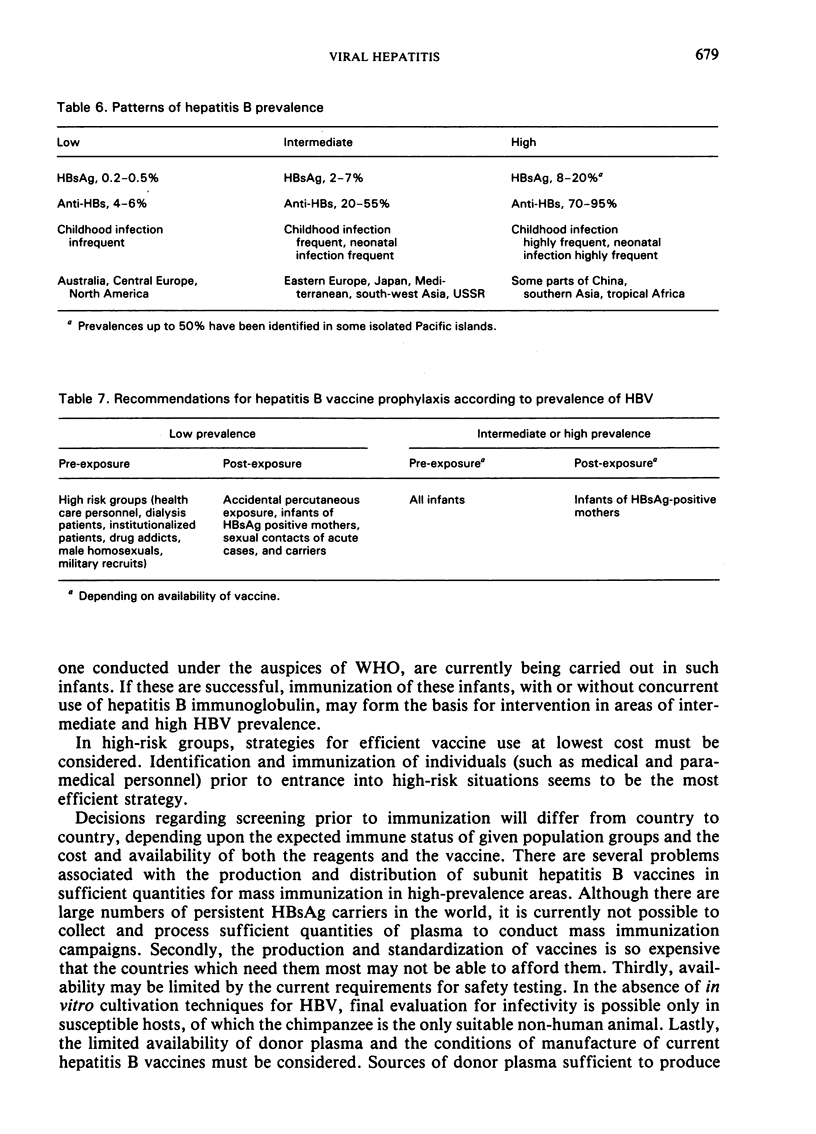
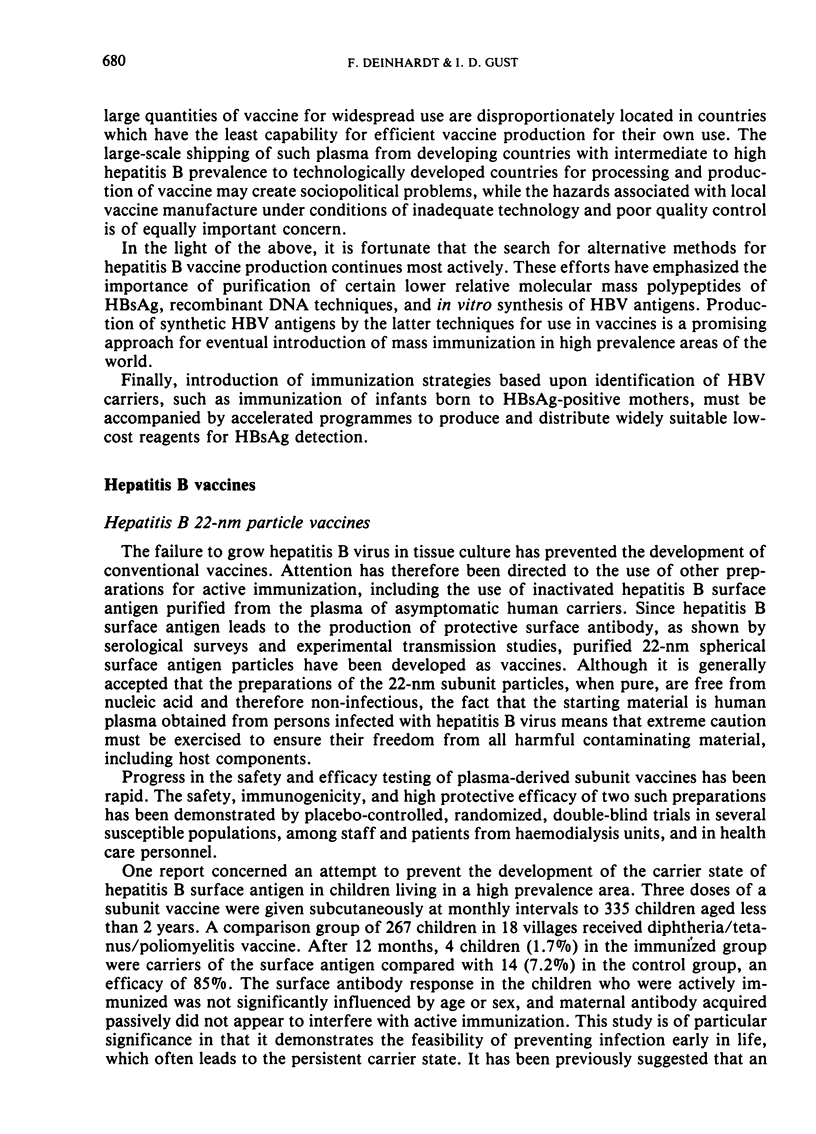
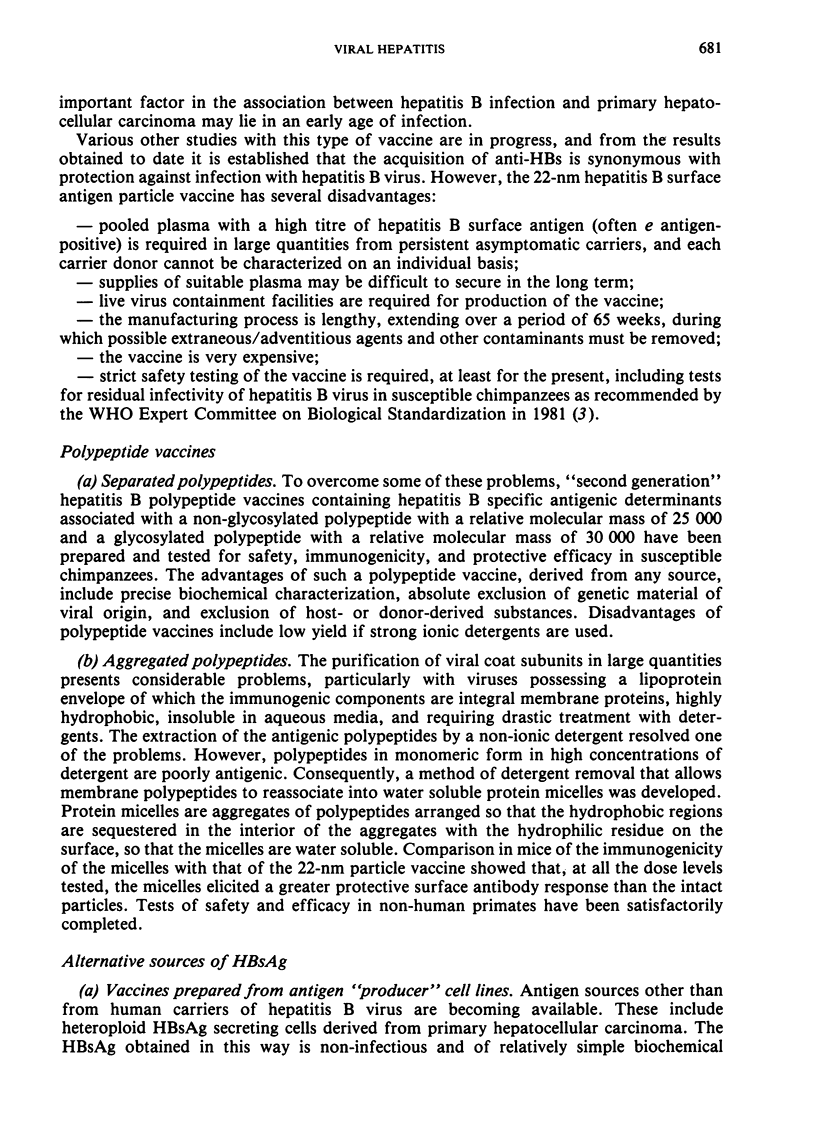
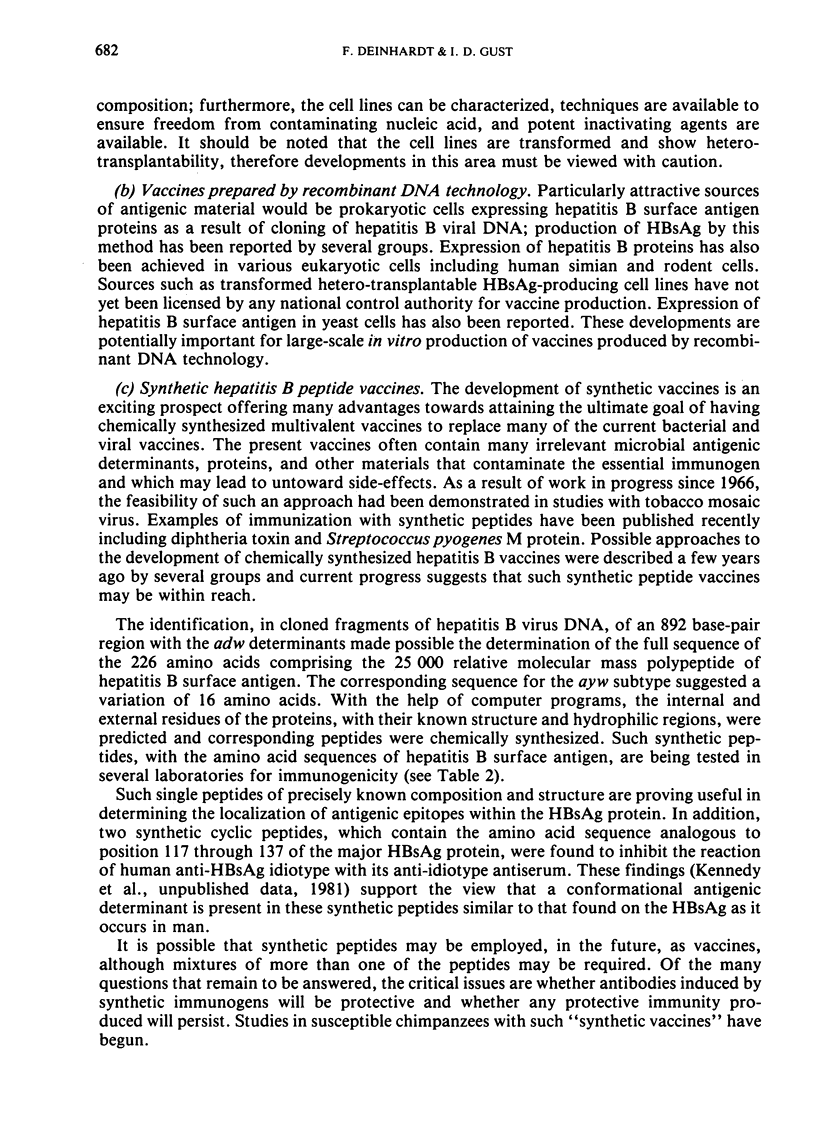
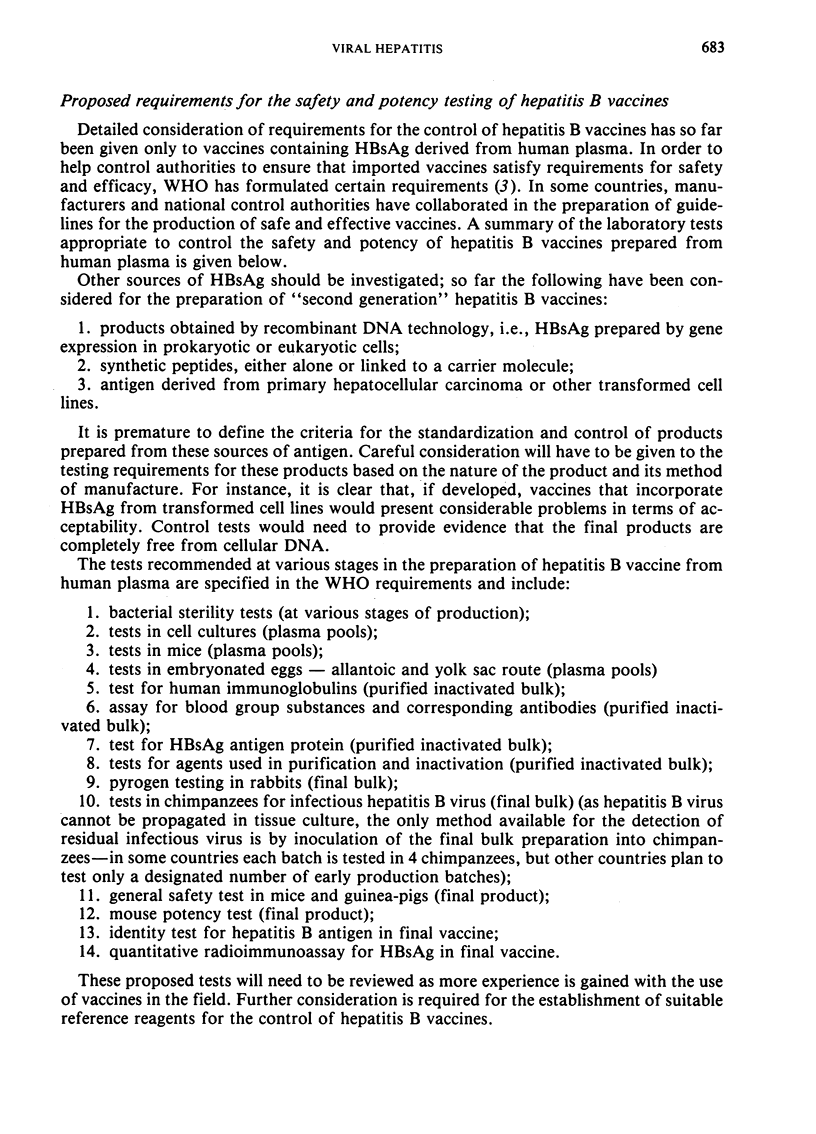
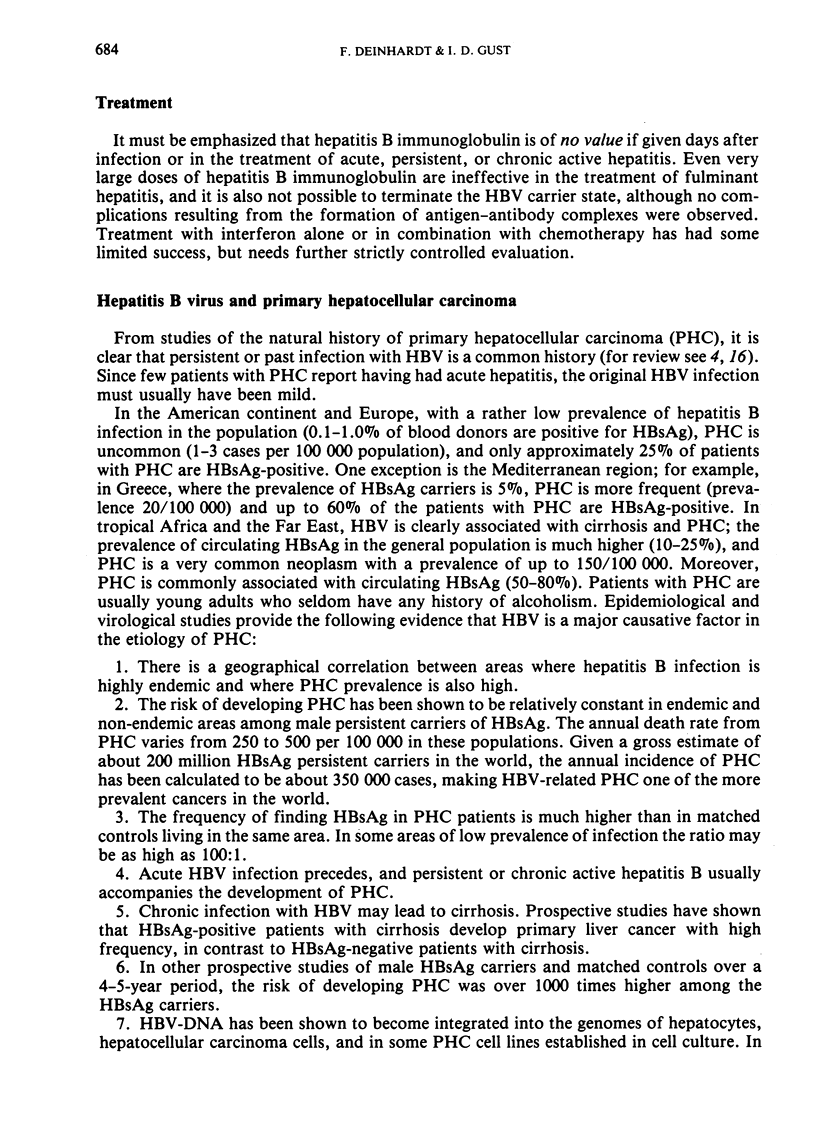
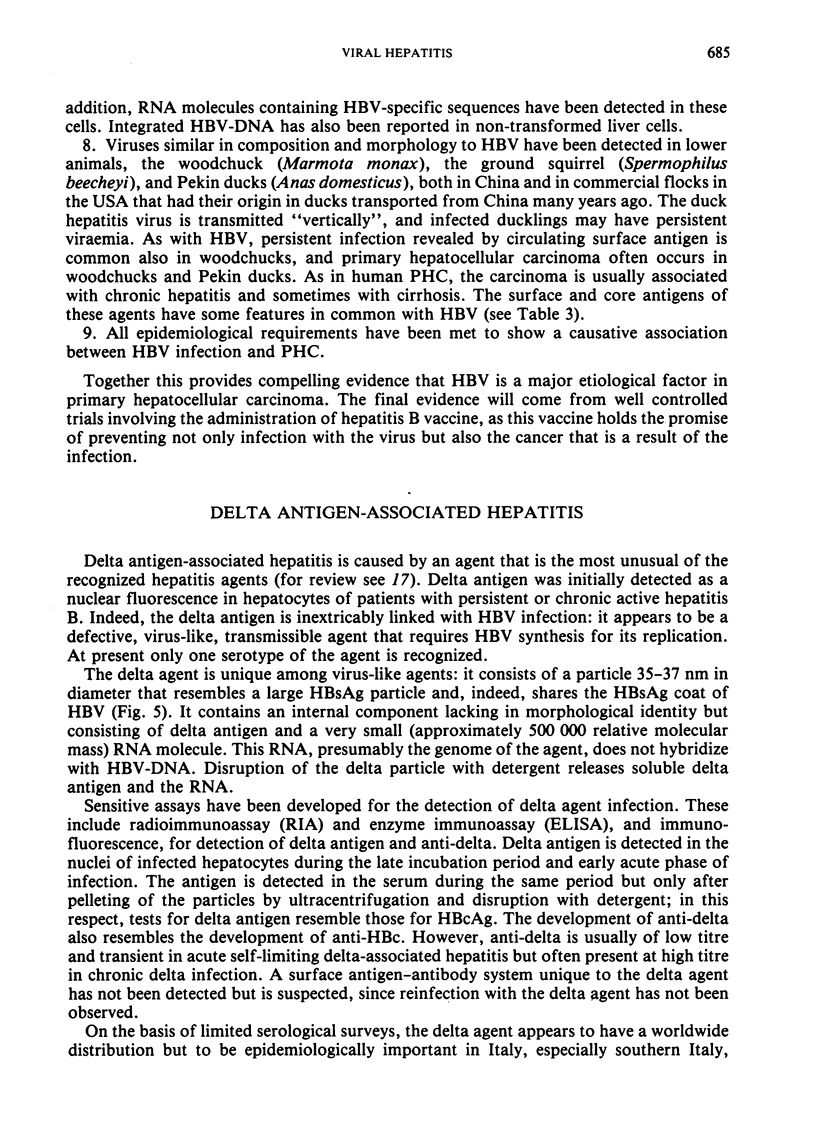
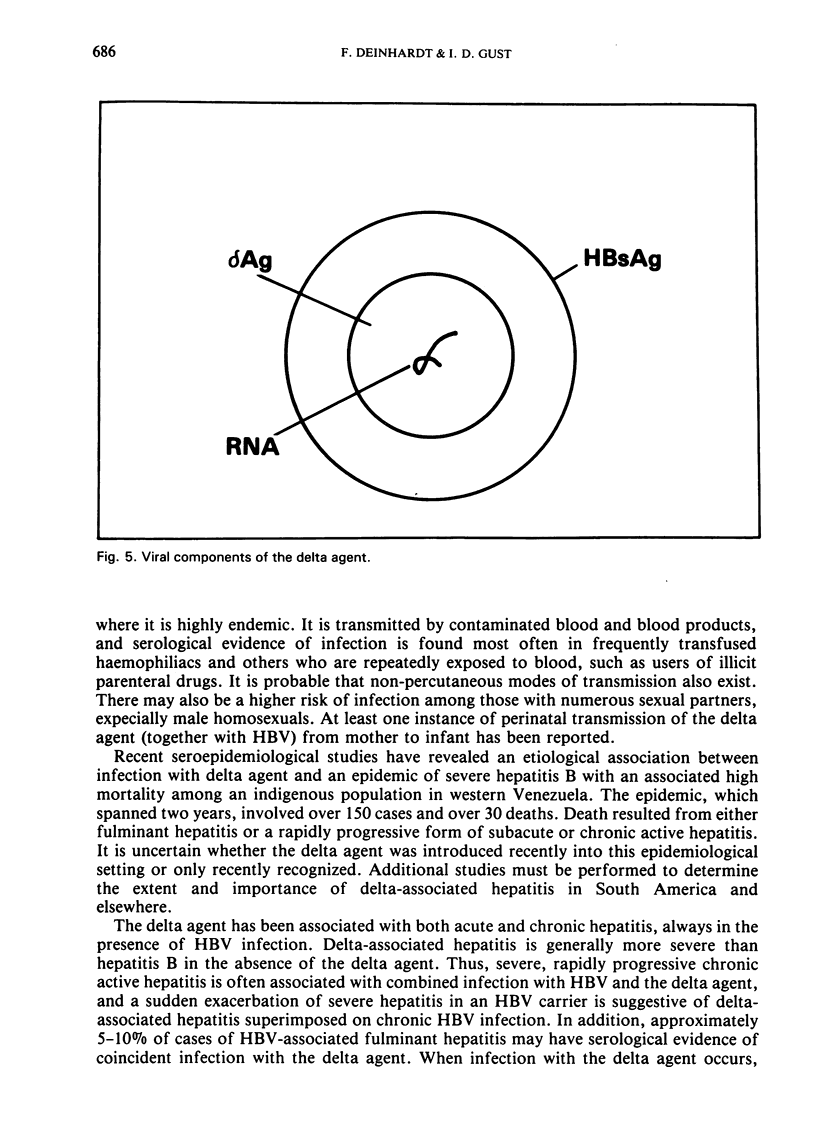
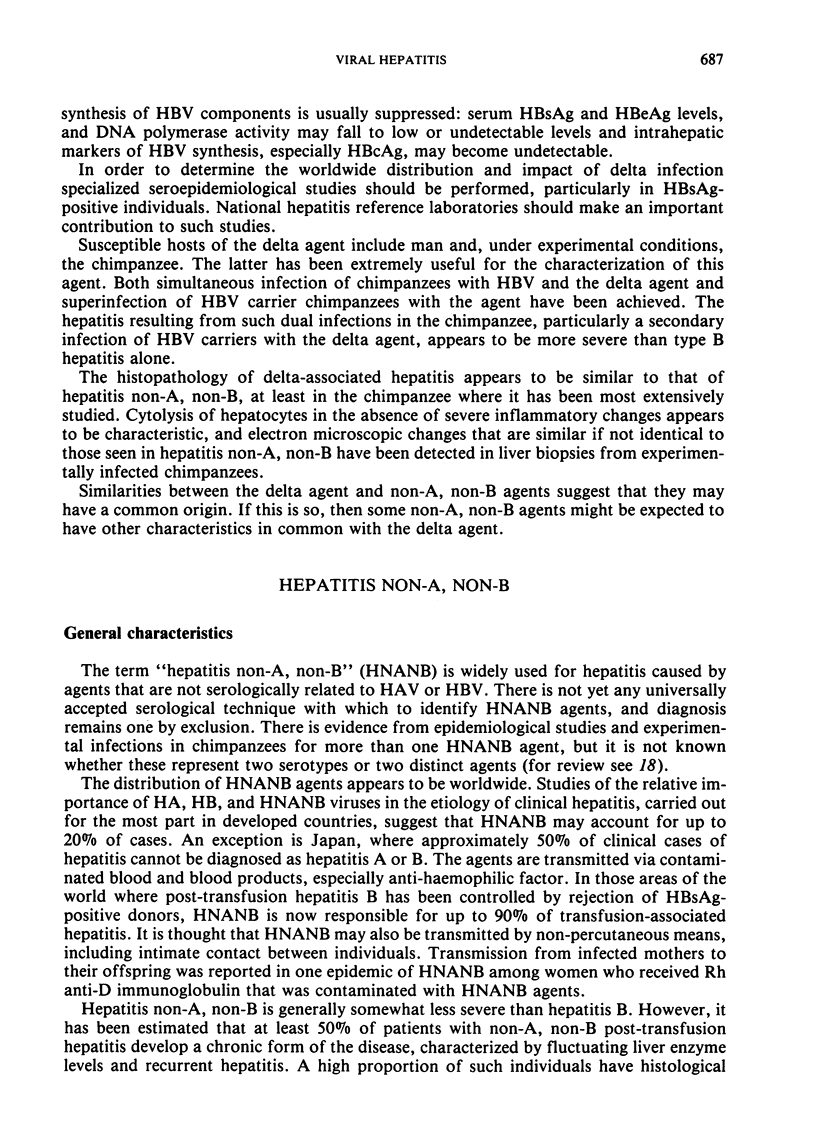
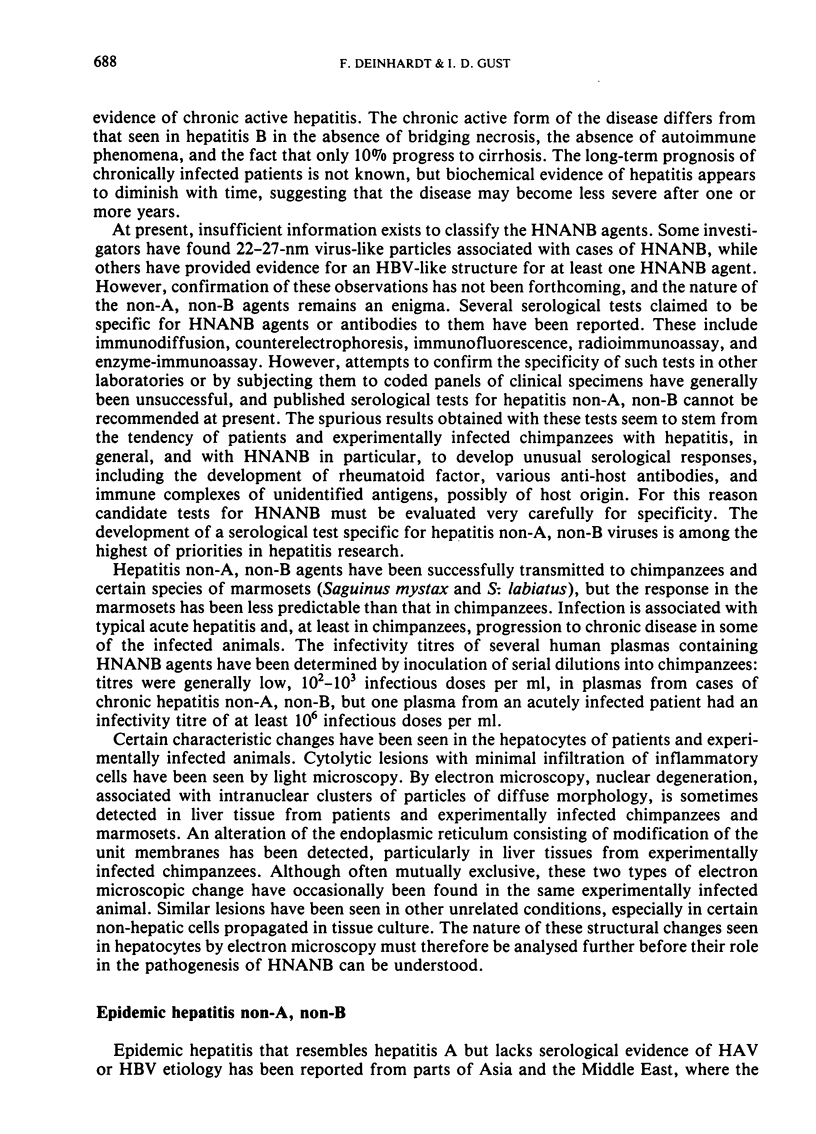
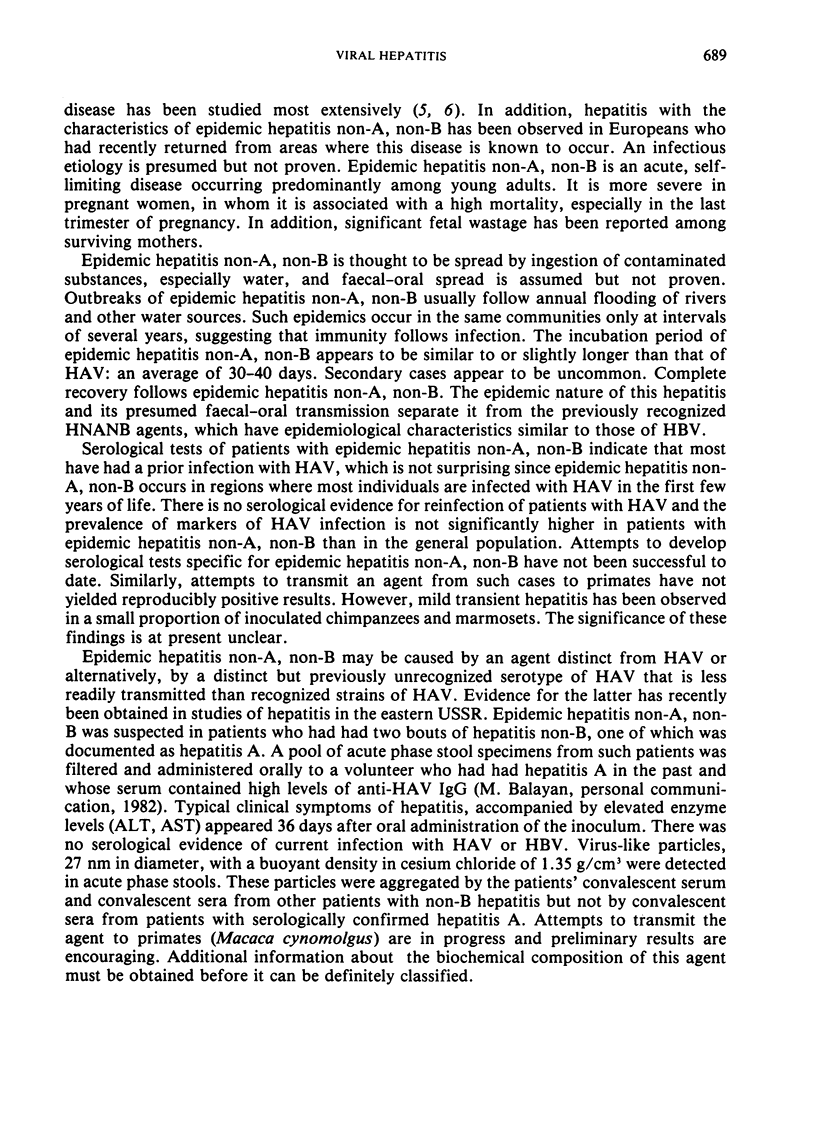
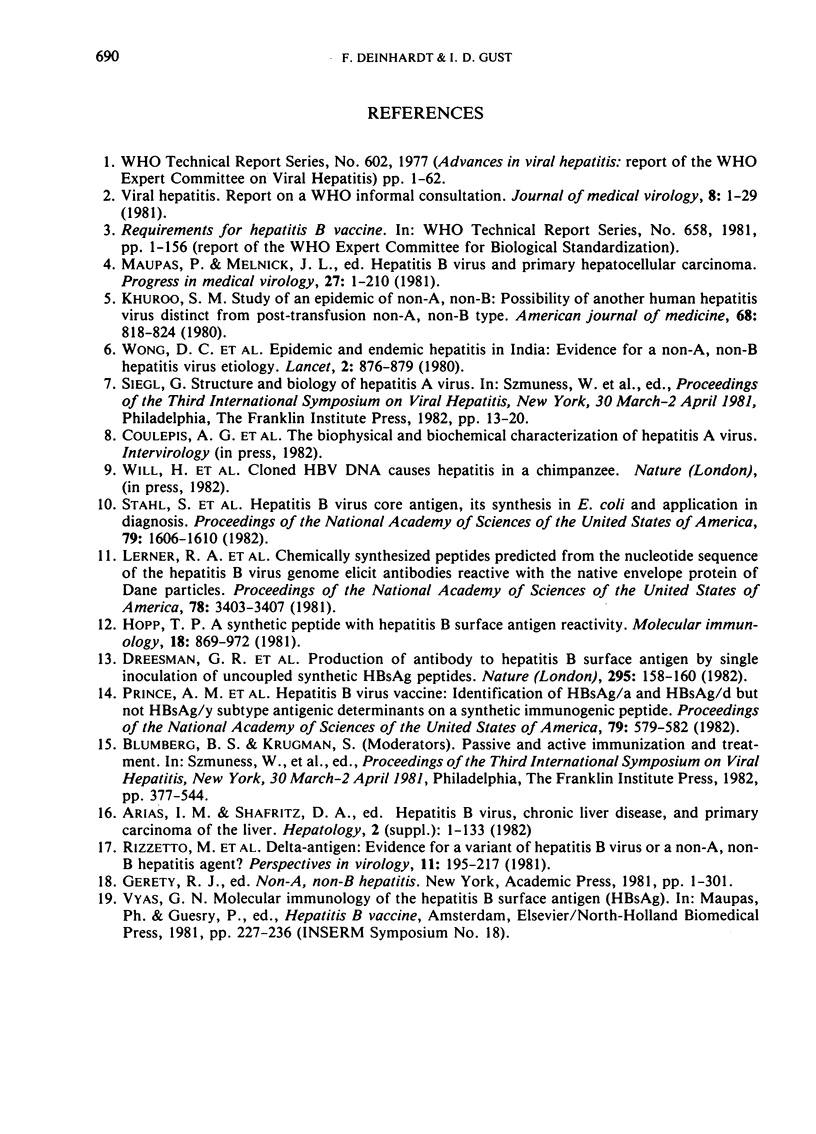
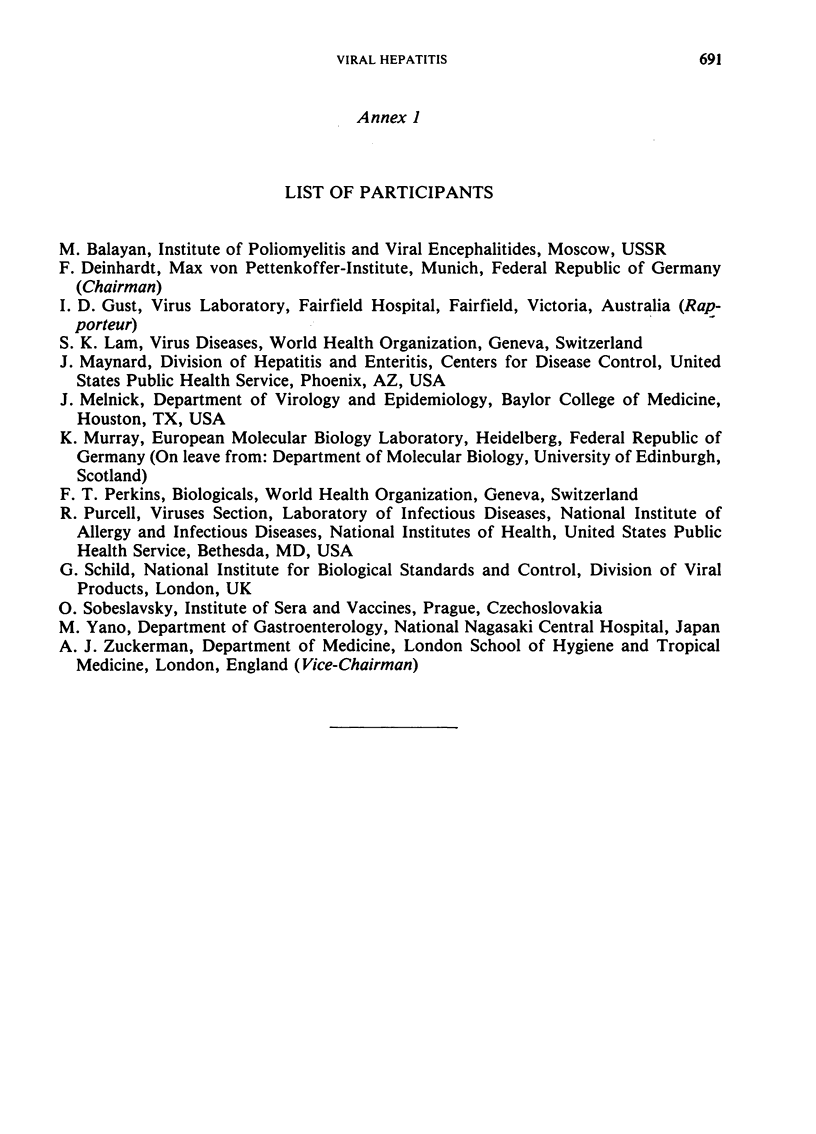
Selected References
These references are in PubMed. This may not be the complete list of references from this article.
- Dreesman G. R., Sanchez Y., Ionescu-Matiu I., Sparrow J. T., Six H. R., Peterson D. L., Hollinger F. B., Melnick J. L. Antibody to hepatitis B surface antigen after a single inoculation of uncoupled synthetic HBsAg peptides. Nature. 1982 Jan 14;295(5845):158–160. doi: 10.1038/295158a0. [DOI] [PubMed] [Google Scholar]
- Hopp T. P. A synthetic peptide with hepatitis B surface antigen reactivity. Mol Immunol. 1981 Sep;18(9):869–872. doi: 10.1016/0161-5890(81)90009-2. [DOI] [PubMed] [Google Scholar]
- Khuroo M. S. Study of an epidemic of non-A, non-B hepatitis. Possibility of another human hepatitis virus distinct from post-transfusion non-A, non-B type. Am J Med. 1980 Jun;68(6):818–824. doi: 10.1016/0002-9343(80)90200-4. [DOI] [PubMed] [Google Scholar]
- Lerner R. A., Green N., Alexander H., Liu F. T., Sutcliffe J. G., Shinnick T. M. Chemically synthesized peptides predicted from the nucleotide sequence of the hepatitis B virus genome elicit antibodies reactive with the native envelope protein of Dane particles. Proc Natl Acad Sci U S A. 1981 Jun;78(6):3403–3407. doi: 10.1073/pnas.78.6.3403. [DOI] [PMC free article] [PubMed] [Google Scholar]
- Prince A. M., Ikram H., Hopp T. P. Hepatitis B virus vaccine: identification of HBsAg/a and HBsAg/d but not HBsAg/y subtype antigenic determinants on a synthetic immunogenic peptide. Proc Natl Acad Sci U S A. 1982 Jan;79(2):579–582. doi: 10.1073/pnas.79.2.579. [DOI] [PMC free article] [PubMed] [Google Scholar]
- Wong D. C., Purcell R. H., Sreenivasan M. A., Prasad S. R., Pavri K. M. Epidemic and endemic hepatitis in India: evidence for a non-A, non-B hepatitis virus aetiology. Lancet. 1980 Oct 25;2(8200):876–879. doi: 10.1016/s0140-6736(80)92045-0. [DOI] [PubMed] [Google Scholar]


